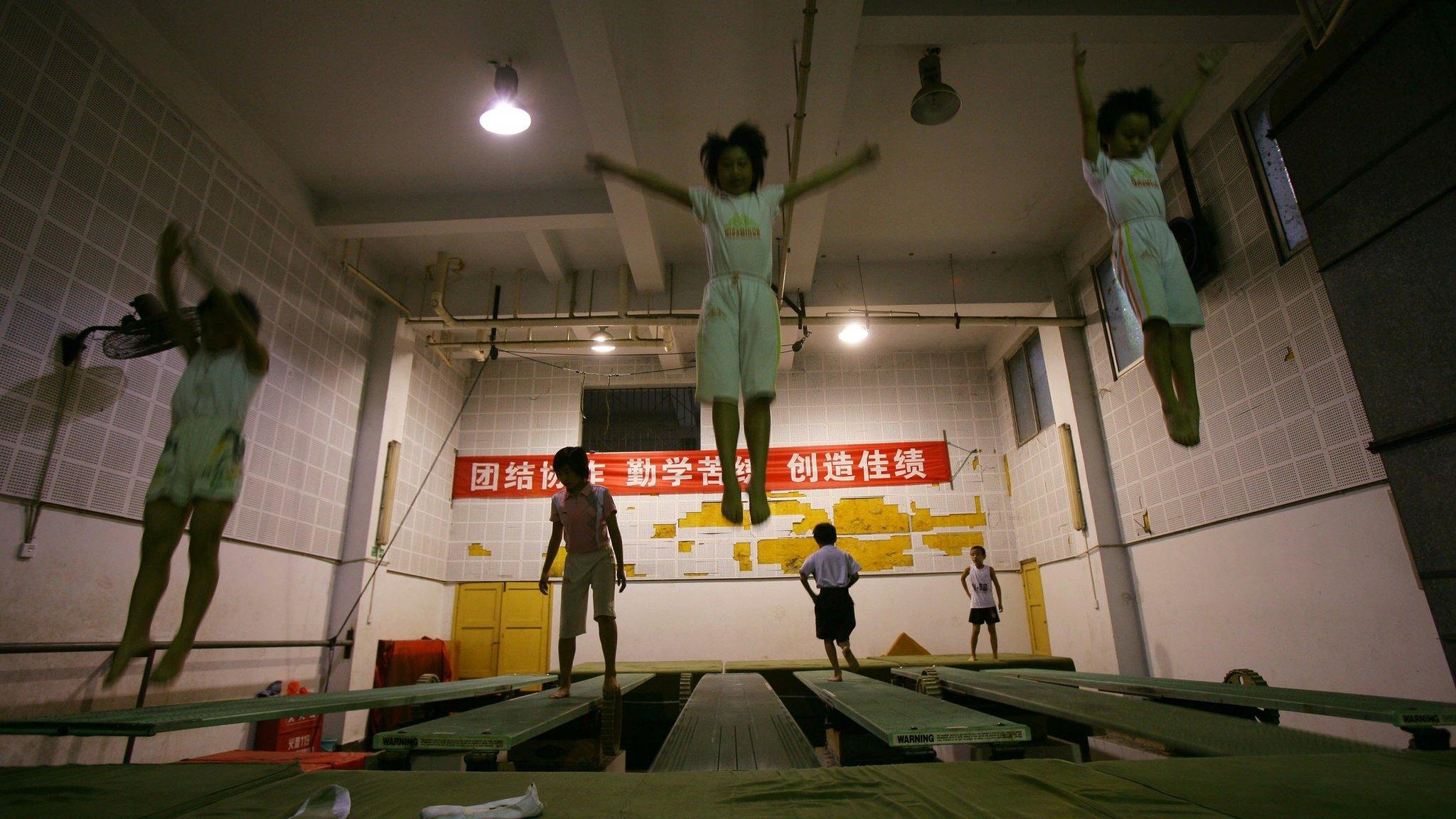Can Wuhan's state-owned giants adapt?
- Published
- comments
Giant state-owned firms still dominate the economy but many are inefficient
Through the grime and pollution that hangs over the city of Wuhan there are days when the sun barely shines. It's just a yellow disk.
This industrial city that sits on the Yangtze river in the middle of China is home to more than six million people.
In the grey murk the tower blocks on the far bank of the Yangtze look like shadows. Ships steam downriver laden with containers full of goods.
Wuhan is a pretty good place to take the temperature of what's happening in China's economy.
On the face of it things look good, China has just announced growth picked up a little at the end of last year to clock in at 7.8% for 2012. But that is well below the average of 10% China has recorded for the past decade.
Massive old iron and steel industries helped build Wuhan's economy. Wuhan Iron and Steel Corp (WISCO) is one of the biggest iron producers on the planet, among the biggest 500 firms in the world.
WISCO employs 80,000 people. The giant ironworks occupy 20 sq km of the city. It's a vast complex of factories and workshops. Giant piping criss-crosses the site, towers belch out smoke and steam pours from vents in the ground.
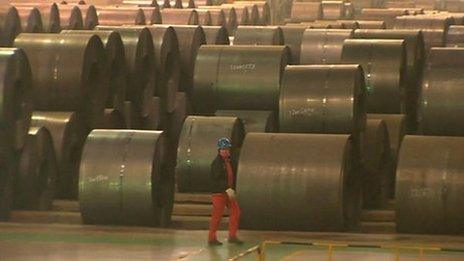
Tens of thousands are employed by Wuhan's state-owned giants
Molten steel pours from giant furnaces to be used in everything from cars to boats, railways to buildings. Huge slabs of it are piling up in warehouses, along with giant rolled sheets.
You'd think this firm would be booming given China's incredible economic growth. But despite sales worth billions of dollars every year WISCO is making a loss on its iron and steel, its only profits come from other businesses it has expanded into.
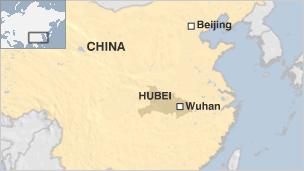
"The economic problems we're facing this time are more serious than the Asian crisis in 1998," explains Sun Jin, the firm's director of international communications. "It's like the steel business has entered a deep winter, it's probably going to continue for three to five years."
As China boomed many iron and steel mills were opened. But for much of the past two years growth has been slowing and even for an economy growing at nearly 8% a year there's just too much steel being produced - oversupply means WISCO can't make profits.
"To get through this winter we have to first strengthen our steel-making, to adopt new technologies and make higher quality steel," says Mr Sun. "We also aim to diversify into new businesses." WISCO's boss has even talked of going into pig farming.
Drive to urbanise
Part of the problem is that WISCO is a giant state-owned enterprise. The government has ordered it to cut production, but it is not allowed to shed large numbers of jobs to save money.
It's China's problem too, giant state corporations still dominate parts of the economy. Many are inefficient and need to change if China is to create new, more profitable jobs for its workers.
Despite the problems at its biggest employer, the city of Wuhan is booming. It's province of Hubei, home to more than 60 million, is now among the fastest growing in China. Last year it expanded by around 12%.

Construction is under way across the city of Wuhan
The growth is, in large part, down to China's relentless drive to urbanise, which has now shifted from the coastal cities to inland areas like Wuhan. The whole city is dotted with construction sites, giant tangles of motorways have been built. Last month saw the opening of a new high-speed rail line and the city's first subway.
Wuhan is copying the formula that's been successful in places like Shanghai. But China's new generation of Communist leaders, headed by Xi Jinping, know this building spree can't continue forever. China's economy needs to reform.
That's why they have said China needs to switch from chasing high GDP growth as an end in itself to creating better-paying jobs that will lift incomes.
Urbanisation will continue to drive China forward, moving people from the countryside to the cities like Wuhan where they can earn more. But new jobs need to be created too.
So to replace Wuhan's grimy old industries, the city is doing its best to encourage new, higher-tech, innovative firms.
On a science park, workers in spotless white overalls are making screens for mobile phones.
Zhou Yunzhi is deputy general manager at Tianma Microelectronics. "China is making changes to its economic growth. We want some old industries to fade out and to develop new and high-tech industries," he says.
And he adds: "China is losing its advantage in labour-intensive industries. In the past we could rely on mass production, low quality but low cost. But we can't compete like that in future. We need to upgrade. So for the next 10 years we are going to go through a process of change."
New future
Along part of Wuhan's river frontage you can see the aim taking shape. Han Street, a new, upmarket shopping district is being built, housing Western brands like Marks and Spencer from the UK, C&A, Zara and Uniqlo.
This is the new consumer economy China's new leaders want to grow. They want their country to rely less on exports and massive investments in construction projects as it does now, and develop instead China's own, domestic economy.
The idea is that a new middle class, with rising incomes, will spend more. Service industries will create more jobs, and the economy will be more sustainable.
It'll mean making deep changes to old industries like Wuhan Iron and Steel, reforming China's giant state-owned enterprises. It'll require changes to policies that restrict the ability of people to migrate permanently to the cities.
Bank and financial reforms are needed, changes to the way governments in places like Wuhan earn their revenues, and better provision of healthcare and pensions.
The goal is clear, but getting there, finding a way through the murk and smog that hangs over cities like Wuhan, and forging a future based not on steel but a different type of economy - that's the hard part.
- Published18 January 2013
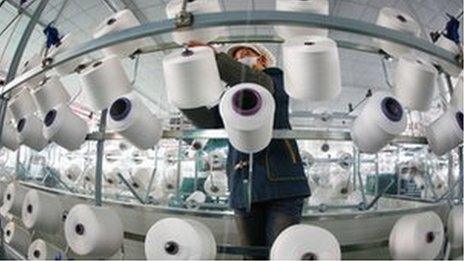
- Published18 January 2013
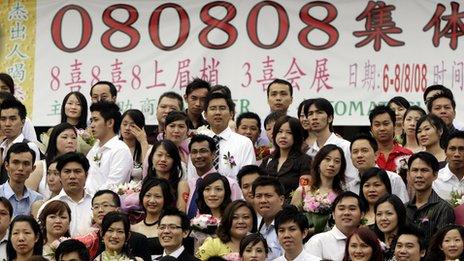
- Published18 January 2013
